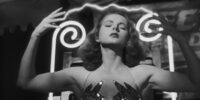The Castro Theater is a two-story historic movie palace. It sits at the top of the Muni line in the gay Castro district in San Francisco. It lords over the city. You can see Twin Peaks from here. Not to be mistaken with the fictional Lynch/Frost town, these Twin Peaks are two large hills in the center of the city. The heart of the Bay Area.
It’s 2006. I’m standing in a long line that curves around 17th Street. We are waiting for the gilded Castro Theater doors to fly open and the staff to usher us in. There are probably a few hundred of us but I’m alone in this ticket holder line. My friends like Twin Peaks, but don’t love it the way I do. They stayed home.
The movie line is full of characters. Some are log lady likenesses, some are hipster Agent Coopers with FBI badges, some are RR Diner servers with blue and white dresses and serving trays, some are Nadines’ with red and white cheerleading garb and eye patches. One couple has perfected a life size Waldo the myna bird, their partner a head to toe bird cage with feather bits and fake dried blood. I just love how weird San Franciscans AND Twin Peaks fans are. The combo is everything.
I’m wearing a button down short sleeved cream shirt, vintage thin track sweater, and schoolgirl plaid polyester/twill mid-calf skirt. My shoes are Mary Jane flats. All thrift store finds. All part of my ongoing attempt to embody Moira Kelly’s Donna Hayward.
I’m going to freeze in this outfit. I should know better. But I look cute and being fashionable outweighs comfort and sensibility every time. At least I have the wherewithal to don a scarf and gloves. On the top of my left ring finger glove, is a pin. Enamel, bronze. A small, simple statement. The Owl Cave.
As expected, the once warm summer air, turns crisp. Condensation flakes begin kissing my skin. As the sun sets, the evening fog encircles me. I move my feet from side to side, shaking off the windy gusts hitting my face. A chill runs down my sternum, not just because of my poor outfit choices in the foggy breeze, but a biting indicator of what’s to come.
“Lynch was right to be booed off the stage at Cannes for Fire Walk With Me. It sucks compared to what he did with Wild At Heart.” A non-costumed patron’s words are a blast of cold air in my face. I give a death bag stare in return.
“It’s because audiences couldn’t tolerate seeing violence and incest on the screen. His art makes people uncomfortable and it should,” I fire back, and get some “exactly’s” and echoes of support from fans in line. I feel relieved and vindicated. These Twin Peaks peeps got my back.
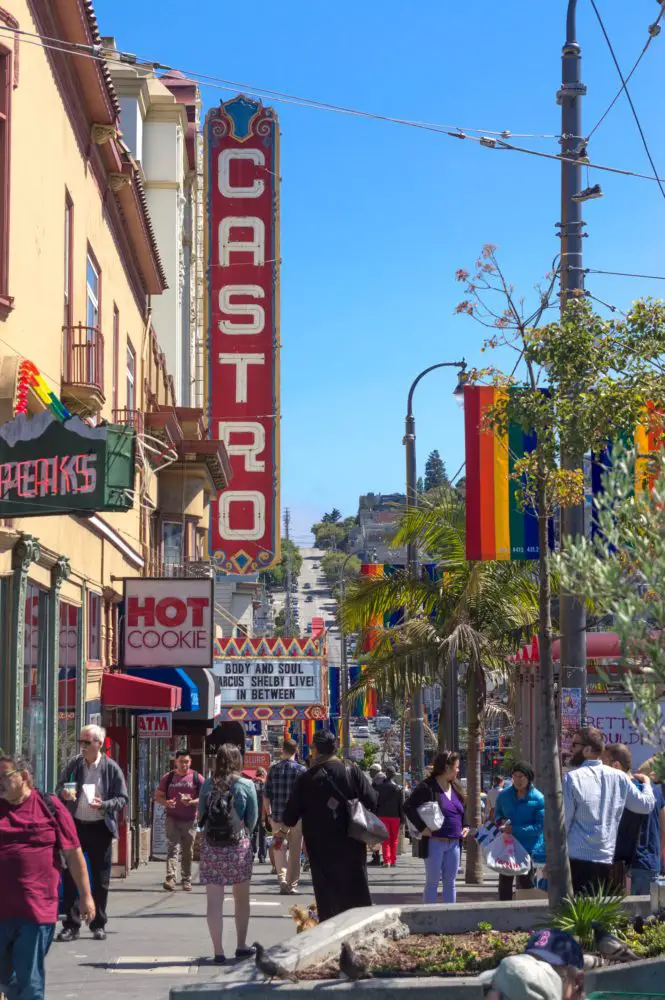
Finally the line begins to move forward. We pass by retro Orphan Andy’s diner, then a gay bar aptly named “Twin Peaks.” The infamous Hot Cookie store (note to self to grab a freshly baked macadamia nut on my way home), and a news kiosk that never seems to be open.
The partially lit maroon sign, spelling out “Castro” in white letters shows itself. The marquee comes into focus “Twin Peaks: Fire Walk With Me in 35 mm.”
I make my way into the theater, not even stopping for popcorn with extra butter at the concession stand. I don’t have time for that. I push past a gaggle of One Eyed Jack’s ladies and run down the center aisle toward the front of the house. I want to sit as close as possible.
Castro movie seats are wobbly, old world chic. I search to find the right spot, finally settling on the front row center. A little too close for the trauma and violence to come. But I want the up close experience. I want to breathe in the last week of Laura Palmer’s life.
I’m excited-nervous. I have never seen Twin Peaks: Fire Walk With Me (FWWM) on the big screen. As the lights go down, the pipe organ player rises up from the pit to open the night. Notes beginning “San Francisco,” our cities’ theme song, lift from the Mighty Wurtlizer, a Castro staple for 30 years. A tear dipped in wonderment and awe slides out of my eye and onto my cheek. I’m crying and the film hasn’t even started yet.

Red velvet curtains pull back to reveal a blue fuzzy screen and a pulsing, eerie Badalamenti score. The opening notes take me into a sad dream. Laura’s sorrow and her weariness. Slowly and methodically each of the main actors are credited on screen with the unmistakable Lynch-chosen font. The white letters are a homecoming.
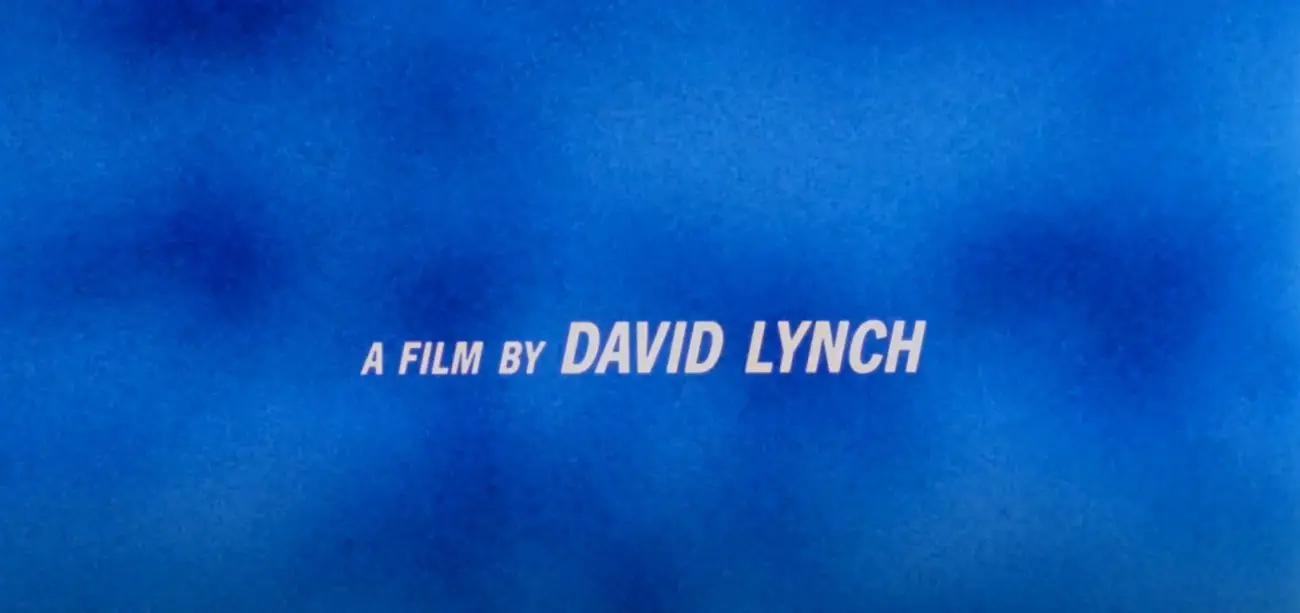
As the camera zooms out we see that we have actually been watching a TV all along. We are all inside a dream and are the dreamer. I’m still in a meditative trance until Teresa Banks’ piercing scream of terror hurls me back into the Castro.
FWWM on the big screen does something to me. Words haven’t been invented yet to describe it. I always thought watching my beat up VHS copy at home on my 23 inch screen was good enough. Nope. You haven’t seen FWWM until you have seen it in 35 mm, front row, alone, dressed as Donna Hayward.
It was more intimate and personal than I could imagine.
Laura Palmer. The incomprehensible performance of Sheryl Lee. Her laughter, her cries, and her screams wash over me, under me, inside of me. She touches the places in me that have been injured and awakens them.I dissociate but I’m enthralled at the same time. I’m present with Laura, and also aware of my stomach’s emotional gut wrenching.
Sheryl Lee’s performance rips out my heart out and then puts it back in my chest. Her pain is specifically hers, but it is so many women’s pain. Of surviving the unspeakable.
Suddenly it’s just me and Laura. Donna and Laura. Laying in opposite ends of antique upholstered settees in the Hayward living room. Two Best Friend gold heart necklace pieces looking up into the ceiling. Talking boys and laughing. Waxing poetic. Fear under lacing the easiness of the afternoon.
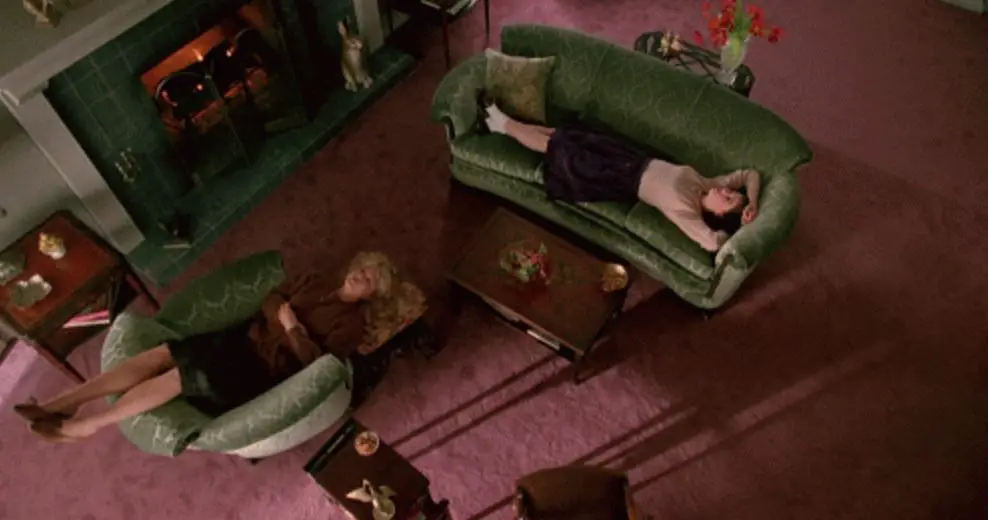
I look down at my owl ring symbol on my glove. In this moment, in the theater, in my Lynch and Frost stupor, in my Videodrome-like immersion, dressed as Donna, I’m completely involved.
I’m in Laura’s story with her. I take off the owl cave pin from my ring finger, afraid I too could end up like Teresa or Laura. I consider it in my hand, and then put it back on.
When the film ends I stay in my seat, waiting for others to leave first. Wanting to savor any last bits I can. A woman wrapped from head to toe in plastic tarp, face painted icy blue, waddles in front of me. She is posing for a picture, the red theater curtains behind her. She smiles at me. Come up here, she gestures without words for me to join her on stage. Ok, I think, she’s bold enough to be dressed as a dead girl, let’s do this.
Her motorcycle jacket wearing James Hurley boyfriend is behind the camera. Like the picnic scene in the original series, she and I are versions of Laura and Donna. We dance together, rolling our arms, taking turns to kick out our legs. We laugh especially because this dead girl, wrapped in plastic, can’t really kick.
James pops open a green bottle of Stella Artois and hands it to Laura. She takes a sip and hands it to me. “Chug a lug Donna!” she bellows. We laugh some more. A take a sip, consider my role, and finish the bottle.
Later when I walk home, I munch on my macadamia nut cookie, taste bits from my sugar cookie, and sample my snickerdoodle cookie. You can’t just get one cookie from Hot Cookie. It wasn’t just the sugar, I could feel the electrical currents still swimming through my veins from the film. The energy from the # 6 post in the Fat Trout Trailer Park, jumping off screen into my cells.
From that night in the Castro when electricity coursed through me, and through each rewatch since, my relationship with FWWM continues to evolve. I never see this film in the same way. Each time is different and my relationship to Laura’s story changes. My love for the film grows and grows.

My FWWM passion was reignited and Laura’s journey told anew when I had the honor to read Scott Ryan’s book Fire Walk With Me: Your Laura Disappeared. It is the 30 year anniversary of FWWM, and I can think of no-one to better commemorate the celebration of this transformative film than Blue Rose Magazine editor, Red Room Podcast host, and author Scott Ryan.
Quick witted, honest, packed with punches, his book is unmistakably Scott. His voice is crystal clear, warm, funny, sharp, solid. He is a comedian to the bone but shares his vulnerability and what it was like for him to see the film back in 1992 when it was released.
Where were you when you first saw FWWM?
Scott’s book will take you back in time to when you first saw the film. Either on the big screen, on VHS, on Blu Ray, or all of the above. It took me back to my 2006 Castro moment. His work will deepen your relationship to the film. And if you haven’t yet seen FWWM, it will make you want to stop what you’re doing and immediately put it on.
Full of fun fan facts I love, and his personal stories, you don’t have to love FWWM to love this book. You also don’t have to dress as Donna Hayward, or eat a Hot Cookie while reading, but it doesn’t hurt.
I read the whole book in 2 days. I would’ve read it in one night if I didn’t need to wake up early the next morning for work. You’ll even want to read the thank you sections, trust me, they are adorable.
Did you know that:
- Sadly FWWM grossed under 10 million at the box-office?
- Kyle MacLachlan passed on a role in FWWM? (Thankfully he later changed his mind)
- Al Strobel’s wife is a spiritual counselor and supported Sheryl Lee after shooting the film?
I knew none of those things before reading Scott’s book. And I know a lot about FWWM. These are just a few kernels. You will be lost turkeys devouring all the corn in FWWM: Your Laura Disappeared. Gobble Gobble.
The book is full of hilarious references, deep reveries on the soundtrack and one liners that will make you LOL. Scott will not however “Lynchsplain” anything to you, despite my desire to hear his meaning making theories on everything. He does however, offer a monkey theory as a joke, that I personally think has a lot of traction.
Scott is a natural interviewer and has a disarming way to get people talking. You won’t want to miss his interviews with FWWM Producer Gregg Feinberg, FWWM DP Ron Garcia, FWWM Editor Mary Sweeney, and yes, even with Laura Palmer herself, Sheryl Lee.
Filled with beautiful personal pictures and film stills, his book is a ride into and through this traumatizing and haunting ethereal dreamy masterpiece. The text flows, is heartfelt, hilarious, sardonic, and lovingly Scott Ryan.
Your Laura Disappeared offers a parallel journey of Scott’s life transforming along with his relationship to the film. It is a heart song to the movie, and more specifically to Sheryl Lee.
Here’s my friend, Scott Ryan:
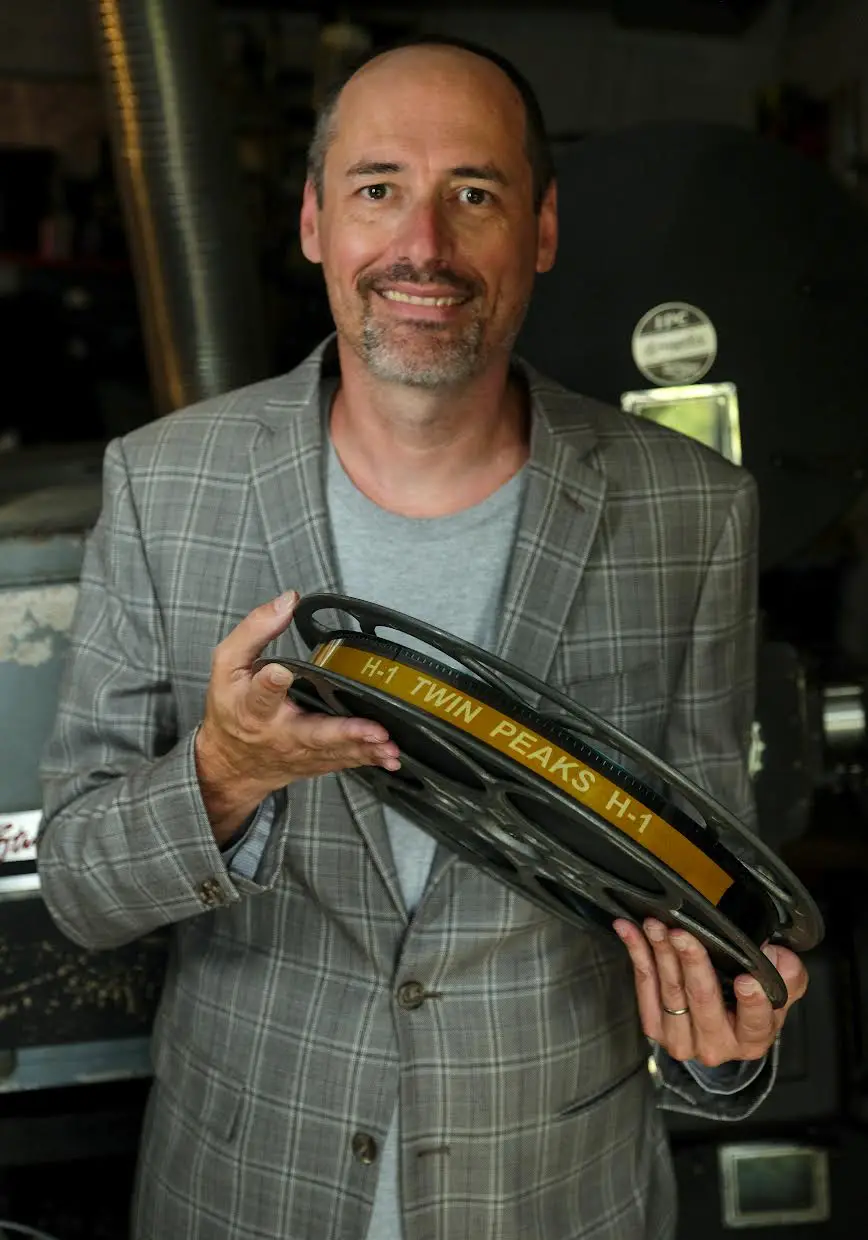
Emily: It’s the 30th anniversary of the FWWM. Why was it time for you to write this book?
Scott: Honestly that’s why I did it. At Fayetteville Mafia Press (that’s the publishing company I run with David Bushman), we look way into the future, it’s just part of being in publishing. In doing that I realized that in 2022 FWWM would turn 30 and my thought was that we need a book. I immediately said, well I’m gonna do that! I emailed Bob Engels who wrote FWWM and said I want to do a book about the 30th Anniversary even though it was like 3 years from when it would happen. So that was really it, it was just time to do it.
Emily: How did your relationship with FWWM evolve as you were writing this book?
Scott: It hasn’t changed one bit and that’s actually a big deal. TP Season 1 and 2, I’ve just seen them too much, with the Blue Rose Magazine we are always in Twin Peaks land. But FWWM, I don’t feel that way about. Usually when you’re done with a book you’re so sick of that topic because you’ve spent every second thinking about it that you just don’t want anything to do with it. But FWWM is in me. It’s in my DNA. It’s something I’ve carried with me since I was 22 years old.
Emily: In the book, you say that “it isn’t the movie that has changed; it’s just that the audience finally caught up to the story and the difficult art that David Lynch served us.” How does the film hold up 30 years later?
Scott: The film holds up perfectly. I don’t think there’s a second of it that feels old or outdated. David Lynch and Mary Sweeney, Bob Engels and Ron Garcia, all these people that came together, they were laser focused on this story, and it’s so perfectly done. And that’s why no one wanted to see it in the 90’s. It’s too rough. It was Quentin Tarantino who is probably my favorite director of all time, who said that David Lynch “has his head up his ass.” That was his comment about it because it’s easier to say that, than to say “I really just experienced what it’s like to be abused.” People would rather say, “that was just crap” instead of “I’m bombarded with this sadness that I can’t even carry.”
Emily: Some readers may think the book is about Twin Peaks:The Return, where our Laura may have in fact disappeared, and turned into Carrie Page, or someone else in some other “what year is this?” dimension. What would you say to those readers?
Scott: Oops! (Laughs)
Emily: Good answer.
Scott: I never thought of it. I don’t think about that scene where she disappears in The Return because I don’t like it. I don’t want it to be. Whether it’s true or not true, it’s not quite reading the room of why we like Twin Peaks, you are taking away something that really mattered. So I never even thought about it. It was always MY Laura who disappeared. That’s who I’m talking about. In multiple ways. Through time, my relationship to Laura Palmer has changed and also that I got to meet Sheryl Lee and become friendly with her.
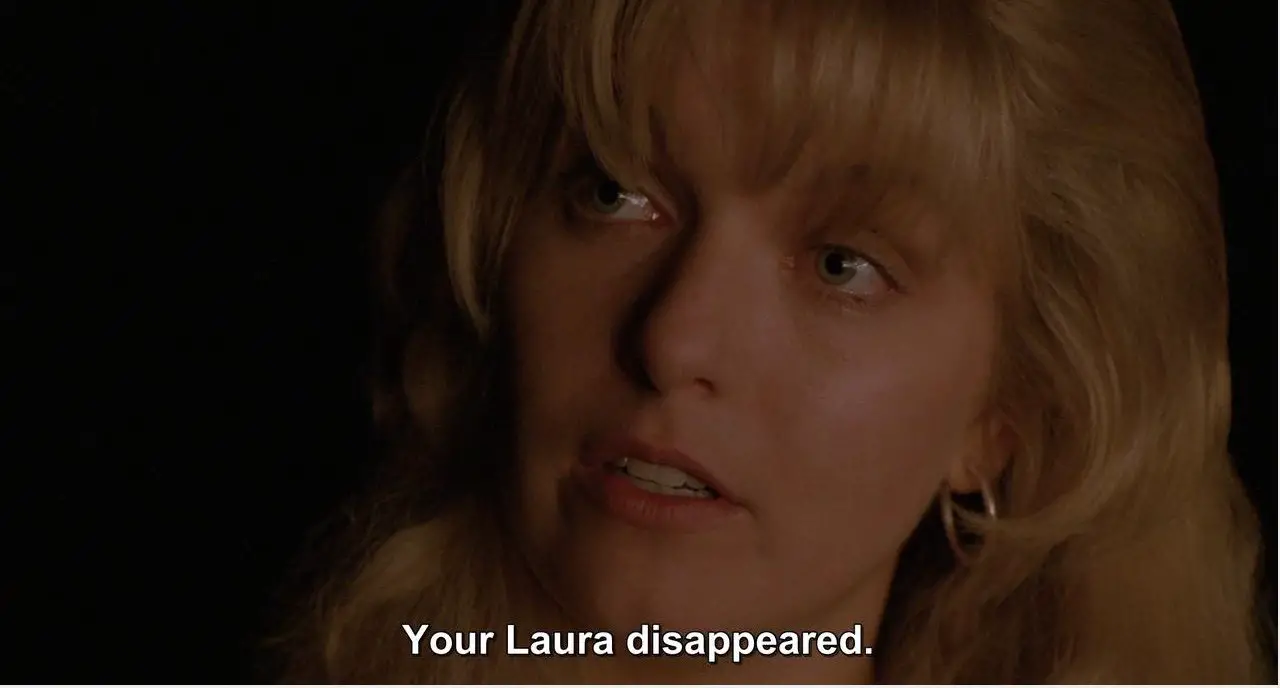
Emily: Laura says “Your Laura disappeared,” to James in FWWM. What are your thoughts on that scene?
Scott: Well if you are going to talk about Laura and James, you really can’t think about Season 2 James. You have to remove that James from your mind. But if you take it just from what James is supposed to represent, who David Lynch and Mark Frost wanted James to be in the Pilot, he was suppose to be someone who was isolated from Laura’s life, and she could see herself through his eyes. So when she says “your Laura disappeared,” it’s the Laura that Laura thinks she is, through James’ eyes. James put a frosty glow over her and was a secret that was outside. It’s gone now because she knows her time is up.
Emily: I had forgotten she said it to him. You don’t talk about this scene in your book.
Scott: There’s so much in that movie that I don’t talk about at all. I feel like someone could read this book and be so disappointed. In a way that’s what FWWM was. You’re not gonna get what you think when you’re coming into this book. It’s not what you think it is. It’s what I think it is. That’s another way for your Laura to disappear.
Emily: What do you think is the hardest scene in the film?
Scott: For me, it’s when BOB comes in through the window and rapes Laura and you’re watching it. And what gets me, is that Laura smiles during it. That has always gotten me. In fact so much so, that I didn’t write about it. I would never put it down in words. The bravery of David and Sheryl to make that choice, tells everything you need to know about Laura. I usually turn my head during that scene it’s just so horrifying.
Emily: When I was watching it last night, I was paying to attention to where that scene was in the unfolding of her realization of who the killer is. That night in particular, she does a bunch of cocaine before bed, which I know is maintenance at that point for her, but I also think she’s trying to stay awake and have consciousness in the nighttime. She is creating agency to be able to wake up and really see who BOB is. So I actually think this scene is a way Laura is trying to stay empowered and see what’s really going on for her.
Scott: 100%. That is why Laura Palmer matters to me so much. She takes control of the misery that she’s been put into. I really struggled with the end of the Return it made me so angry because they are trying to tell us that Cooper is her hero and he stands on the hill and holds his hand out to her. It pisses me off because I’m like Laura Palmer needs to hold no one’s hand. She can do this herself and she certainly doesn’t need a man to come around. In Issue 8 of the Blue Rose Magazine, when I interviewed Sheryl she helped me, she said (and I’m paraphrasing) “but who’s the dreamer?” In other words, that isn’t happening. That’s what Cooper wants to do, he wants to stand on a hill and help her up but that doesn’t mean it’s happening and that doesn’t mean it did happen. If anything is taken away from what Sheryl Lee went through to make that, to give us that piece of art, then I’m really pissed off. Then I’m angry. But if Sheryl Lee’s ok with it, then I have to be ok with it. So it is kind of funny that she’s the one who helped me through that ending.
Emily: Does that come up for you in the very last scene of FWWM when they are in the Red Room and Laura is sitting and Cooper is standing and he’s got his hand on her shoulder?
Scott: No. It doesn’t bother me at all. Because they have flip flopped. Classically Cooper is sitting and she is standing where he is standing. So I would submit that when you take TP Episode 2 or Part 1 in The Return, Cooper is sitting and that is the place of authority. But when you go to FWWM, Laura is sitting and so she is in the place of authority.
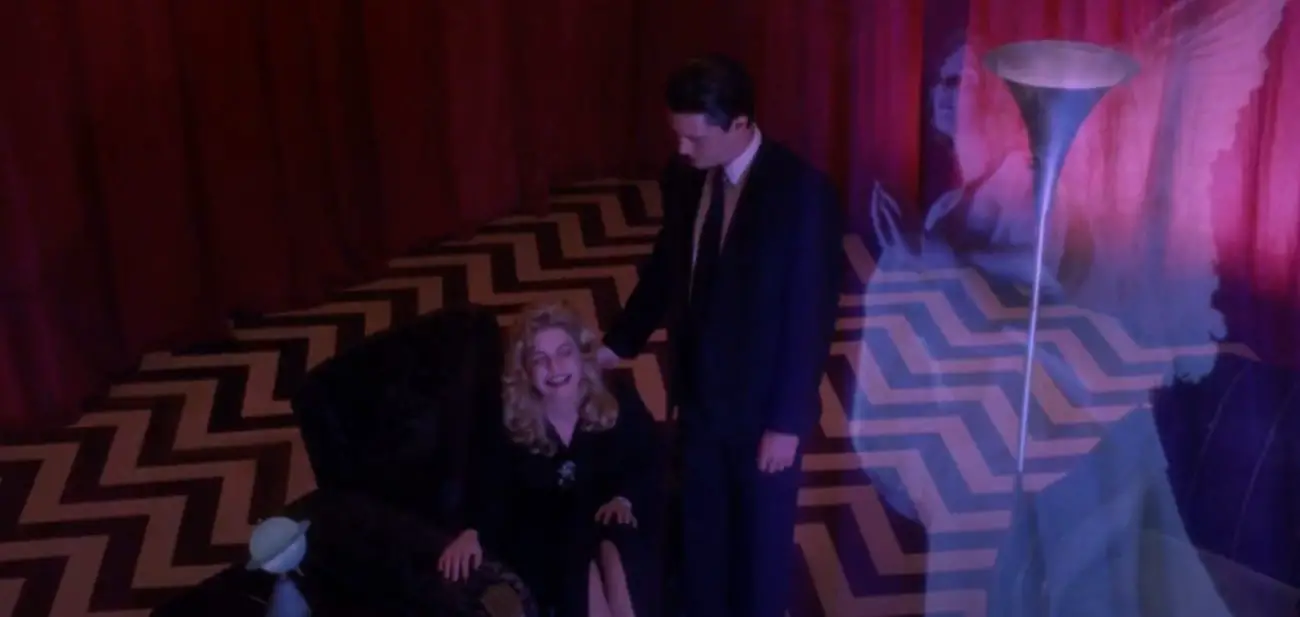
Another thing I think, is that moment in FWWM, where they are in the Red Room and Laura is laughing and she sees the angel and Cooper is standing above her, that is the last moment of Twin Peaks. That is the end of Twin Peaks. I understand that we witness The Return after that moment, but I say that moment happens later, well after “What Year is This?” It takes place after what we saw happen in The Return. So The Return happens before that.
Emily: In your book, you talk about your mental health and how this movie and your relationship to Twin Peaks was instrumental in transforming your entire life. You left corporate America, you decided to prioritize and centralize art, in a way that is hugely inspiring.
Scott: That 22-year-old me didn’t know that was going to happen. In fact that 22-year-old didn’t think he was going to get to be 23 or 24. It was up in the air if I was going to make it. But if Cooper time traveled and stood on a hill above me and held out his hand and said “this is all gonna happen to you,” I would’ve said, “no way.” It just wasn’t in my realm. But I thought, if I’m really gonna write this book I have to be honest with everyone. That it wasn’t easy. It might look easy now as I’m tweeting out another issue of the Blue Rose, but the road from here to there was hard.
There’s so many other stories I could’ve put in but didn’t. I’ve put up with a lot of crap from a lot of people for my love of Twin Peaks. No one in my life now, because I’ve left all those people in the past. Learning to do that, learning to let that version of Laura disappear, how you’re seen through other people’s eyes. The world is set up to crush people like me, the world is set up to get my ass back in that cubicle. The government and every corporation, they want us back in those cubicles. But I can’t do it, I’m not going back there.

I always tell jokes about Sheryl and my obsession with her but I hadn’t ever really been honest. I wanted to really and truly set up what it meant to me that I get to interview Sheryl Lee and how I got from this small, small town where art was not an option, to sitting in the Salish, writing about Twin Peaks. Then getting to walk down to the falls, listening to Julee Cruise who I’ve interviewed and talked about Sondheim with which matters to me, and me and Julee sang a Sondheim song together.
It boils down to Sheryl Lee and Catherine Coulson really pointing me in the right direction. And that is nutty to say out loud because Catherine doesn’t even really know me, we met for 20 minutes tops. She was going through a lot when we met. Her kindness to me really pointed me in the right direction. And when she died 6 weeks later, and I’m sitting in a cubicle doing something I hate every second of my day, I was just like, I’m not doing this anymore.
Emily: Your Laura disappeared….did the Scott you knew have to disappear as well in order to be where you are today?
Scott: No, that little bastard is still in me flipping around, he’s there to knock me down. Anyone who knows me know that I don’t really celebrate success very much. And I’m always there to crack a joke and keep me grounded, so I don’t fundamentally believe that we change in life. I think we are who we are. I’m better at seeing the signs, I know how to maneuver with the baggage that I carry, and to make it through and don’t let it sink me as much. And the main thing is, I’m not surrounded by people who don’t like me. That makes a big difference and that’s the key; to be surrounded by people who support you and I’m so lucky to have such an amazing support system.
Emily: I love how you talk about your angels in the thank you section. I have never enjoyed reading an acknowledgement section until I read your book.
Scott: The book is dedicated to my wife Jen, my cousin Lisa, and Courtenay Stallings because she is the one who got me to the Twin Peaks Fest, which got me to meet Catherine, and she’s also who introduced me to Sheryl Lee. These are the women that without really knowing it, kept me on my path.
Emily: The interviews in the book are amazing! Gregg Feinberg, producer of FWWM and the series tells you anecdotes including one about David Bowie and another about a pig fetus, which I don’t want to give away because I want everyone to buy the book and read for yourself.
Scott: He was incredible because I didn’t know anything about him. But I think he might have been one of the most famous people to come out of Twin Peaks. He is still working on major projects. I was just flabbergasted by his interview it was like opening a door to a room in your house and finding out there was whole other room you didn’t even know was there and you’ve been living in that house for 30 years.
So, I do think that deep cut Twin Peaks fans who are thinking “oh god, I have to read about Scott’s mental health?” and “how Freud is that chapter gonna be?” Don’t worry. There is stuff you’re gonna learn about this film from Gregg and Ron Garcia and Mary Sweeney, they all share things I’ve never heard before.
Emily: The book is really funny. I love all the little drops of Twin Peaks humor that you fold into your sentences, they could be throwaways, but they aren’t. It’s really clever.
Scott: The book is all about the humor. I try for funny. I don’t understand why we can’t make fun of Twin Peaks anymore. Back in the day we certainly could make fun of Little Nicky or the Evelyn stories, but now we live in a weird time where if you crack a joke about The Return then you hate David Lynch. And I like playing, it’s just for fun.

I wrote this book while working on so many other publishing projects, so when I ended up returning to it and reading the whole book I laughed out loud because I wouldn’t see it coming (cause it had been a while since I had read it). So even though we talked about all the serious stuff, I want people to know, you are going to laugh while you’re reading this book, there’s no way you’re not going to.
And you most certainly will, it’s Scott Ryan after all! Pick up your copy today! While you’re at it, grab some of his other books and issues of the Blue Rose magazine too!



